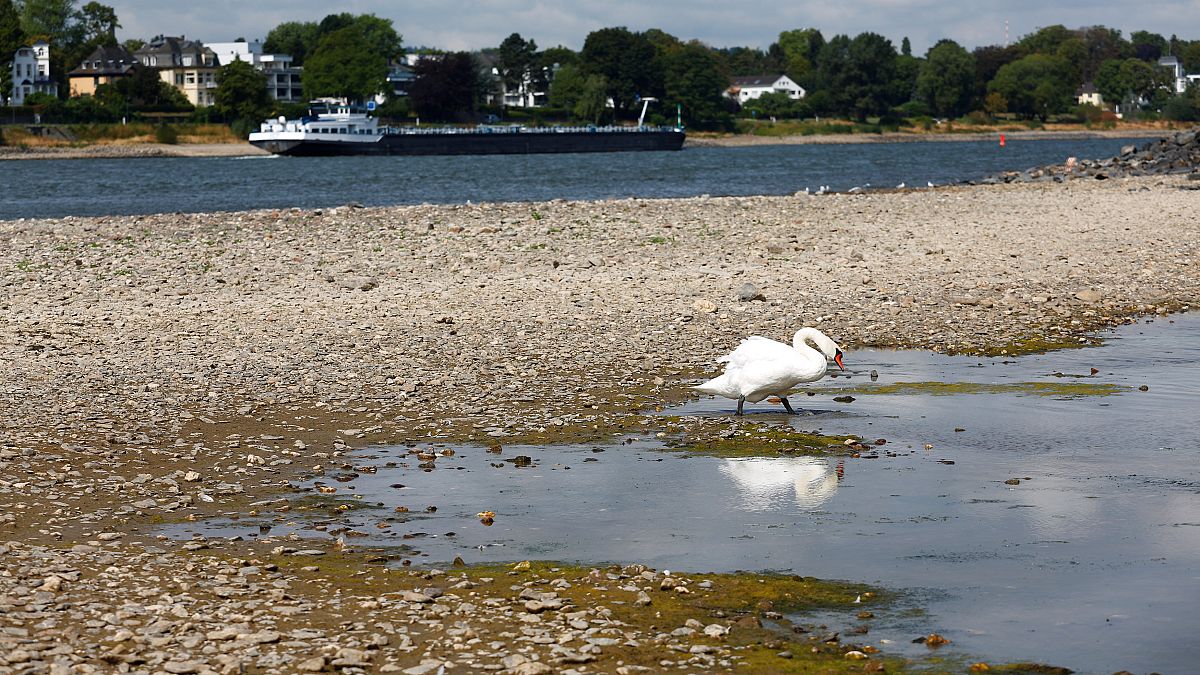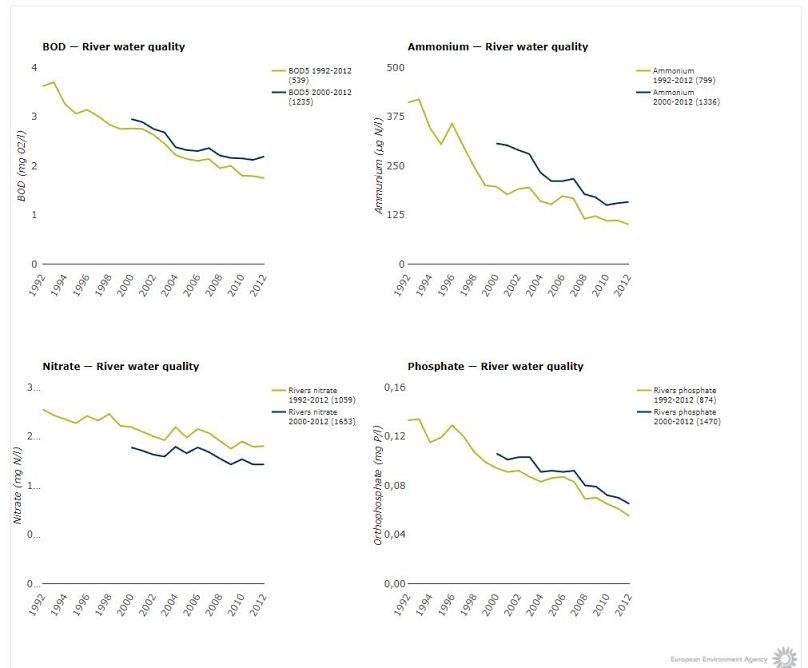Some 60% of European waters monitored failed to reach "good" ecological status.
To mark the conclusion of World Water Week, an initiative that draws attention to issues facing water systems, Euronews has analysed data showing the status of European water.
Despite numerous actions taken on EU and national levels, water quality remains a serious issue for many member states. A newly released report by the European Environmental Agency (EEA) showed that although progress has been made, EU countries are considerably off-track from their set goals.
In 2000, the EU Water Framework Directive was created with the aim of monitoring and improving the water standards of member states. The intergovernmental body set a goal to have all rivers characterised as having a “good” chemical status by 2015.
Speaking to Euronews, lead author of the newly released ‘State of Water’ report and water assessments manager at the EEA, Peter Kristensen, said the research highlighted that “most water bodies such as rivers and lakes do not achieve a good ecological status” and noted that “agriculture is one of the main issues for pollutants”.
Some 60% of the 130,000 lakes, rivers and other water bodies that were monitored for the five-year study did not achieve “good” chemical status standard as set by the 2000 directive.
Which countries are most affected by contamination?
The ‘State of Water’ report demonstrated that central European countries such as Belgium, Germany and Hungary were among the worst performers with more than 90% of rivers and lakes failing to achieve good ecological status. Northern Scandinavia as well as countries such as Estonia, Scotland, Romania and Slovakia performed highly, with a majority of rivers and lakes showing good ecological status.
Kristensen pointed out that it is difficult to compare the performance of nations, as there can be stark contrasts in ecological status within a single country, with 80% of waters failing in southern Sweden versus just 21% in the north. Looking at contamination at a large scale can be difficult with pollution concentrated in areas of high population density, industrialisation and agriculture.
Interactive Map: European Environment Agency
Another worrying element for EU states is water supply. Although “there has been a focus on being more efficient” with the use of water within the EU, irrigation has continued during the dry summers, with July 0.4°C warmer than average and the third warmest on record.
“Cyprus and Malta have experienced several years of drought and have had problems having sufficient water sources,” Kristensen said. Although the issue remains, the lead author of the report also noted that on a global scale, there are many other regions that have a far greater issue with water quantity.
London is a surprising city that faces severe water shortages, with 80% of its water coming from rivers. The Great London Authority has said that the city will face “serious shortages” by 2040 if alternative sources aren’t found.
Positive improvements
The report also showed improvements since the launch of the EU directive 18 years ago. Kristensen said the degree of contamination in European waters has decreased due to “improved wastewater management” such as developments in sewage treatment processes.
Kristensen warned that the improvements in water quality may be a product of “exporting problems” with the decrease in mining within the EU over the decades. The wastewater produced after mining processes is often highly concentrated in heavy metals such as lead and arsenic.
As for the success of the EU in improving water quality, Kristensen said “most countries have improved their performance” although some countries “started later”.
“The Water Framework Directive started a process where there has been a marked improvement in understanding water quality and the issues affecting it,” he said.
Kristensen is optimistic that water quality within Europe will continue to improve, although in the same breath warning that “slow implementation” will hinder development.
What contaminants affect European Waters?
Two of the most common contaminants in water are phosphates and nitrates. Phosphatic fertilisers can cause an issue when used on farms, with high levels of rainfall leading to the contaminant seeping into rivers. Nitrates often accumulate at industrial sites or along leaking sewage lines and is an inorganic contaminant that can cause health issues when consumed in large quantities.
Both of these contaminants cause eutrophication and the growth of algae, which can have a devastating effect on an ecosystem, with the plant taking oxygen from water, causing fauna and flora to perish.
Between 2000 and 2014, overall levels of phosphate per litre in rivers dropped by 22% overall EU member states who took part in other research by the EEA, with a marked reduction in the use of phosphorous in detergents enforced through legislation and better wastewater treatments.
However, FYR Macedonia recorded the highest levels of phosphate in 2014, followed by Belgium and Luxembourg. In fact, FYR Macedonia recorded an 11% increase in phosphate per litre measurements over the 14 year period.
Iceland recorded the highest increase in phosphate measurements at 66.6%, although remaining well below the 0.035mg/l standard for good ecological status at 0.01 mg/l. Scandinavian countries again performed well, with waters in Finland and Sweden measuring on average 70% less phosphate than the threshold.
As for nitrate, the European drinking water threshold standard is 50 mg/l as NO3. The average groundwater measurement across all countries was recorded as around 62% below the threshold. However, both Cyprus and Malta had nitrate concentrations near or above the standard.
What is the cost of water in European cities?
Four towns in Denmark top the list of Europe's most expensive water, according to data from the International Water Association. The 2015 study looked at 160 cities around the world. Danish town Odense proved to be the most expensive when taking into account total charges, with one cubic metre of water costing around $9 (€7.72). For all of the Danish towns that featured, environmental charges contributed to roughly half of the total price.
As for the cheapest water in the EU, Romanian towns take the top spot, with water costing around $1.3 (€1.12) with Romania being one of the few EU countries to not apply a standard water charge. Lisbon in Portugal and Madrid in Spain followed closely behind, with water costing $1.5 (€1.29) and $1.65 (€1.42) respectively. Costs differ primarily due to varying taxes applied to water as well as environmental factors with some counties needing to invest more due to climatic conditions or increased contamination.

